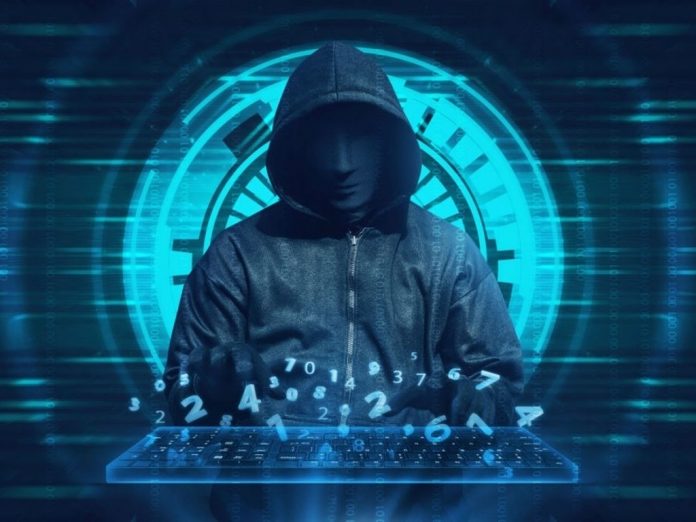This article is written by Ritika Sharma, a law graduate from the University Institute of Legal Studies, Panjab University. The article explains different terms related to cyber laws, along with the categories of cyber crimes, and also highlights the procedure of filing a cyber crime complaint.
This article has been published by Sneha Mahawar.
Table of Contents
Introduction
With the advancement in technology, the world is moving towards the digital forms of e-governance which have made the means of communications and entertainment more accessible. The internet has given the immense power of information to the public. Apart from connecting the whole world through the development of cyberspace, the internet has been proven to be a boon in every field. From a child to an elderly person, everyone is exploring this medium in one way or the other.
However, this has resulted in several cyberattacks that invade an individual’s privacy or harm them financially or emotionally. The cases of sextortion, online fraud, phishing, cyberstalking, cyberbullying, and cyber grooming are surging on a daily basis. These have become very common in the digital world, due to which cyber laws have gained importance. To counter the menace of cyber-attacks on people, initiatives are being taken by the police department and the intelligence agencies with the aid of cyber laws. Multifarious questions with respect to reporting cybercrimes crop up in the minds of the victims and the public in general. What amounts to cybercrime? What are the punishments stipulated for cyber offences? What is the stepwise procedure for filing cybercrime complaints? How can these be prevented? This article aims at answering all such queries.
What is a cybercrime
Meaning of cybercrime
According to Merriam-Webster’s Dictionary, cybercrime is “a criminal activity (such as fraud, theft, or distribution of child pornography) committed using a computer especially to illegally access, transmit, or manipulate data”. The term ‘cybercrime’ is not defined in any statute, however, it includes criminal activities that are carried out in cyberspace with criminal intent. In other words, it can be called a crime that involves the use of a computer and a computer network. Therefore, these crimes are committed with the help of modern telecommunication networks and damage the victim’s physical or mental well-being.
In the case of SMC Pneumatics (India) Pvt. Ltd. v. Jogesh Kwatra (2014), an important judgment regarding cyber defamation was given by the Delhi High Court. In this case, the accused was sending defamatory emails to the victim, and therefore, the victim was granted an injunction, which prevented the defendant from sending defamatory emails.
Examples of cyber crimes
Cybercrimes are no longer limited to just fraud and forgery, and their range is increasing with the rising speed of technological developments. Cybercriminals abuse the technology for the purposes of extracting money or harming the reputation of other individuals. Following is the list of some of the cybercrimes committed in India:
Pornography
This is a serious cybercrime that is generally committed against adolescents or youth. Any sexually explicit material produced and shared using a computer and a computer network falls under this category.
Digital gambling
There are several games that fascinate the citizens and lure them into putting their money into them. A lot of these games are run by fraudsters who commit cybercrimes.
Cyber defamation
It is committed to tarnishing a person’s reputation by spreading defamatory information regarding them with the help of computers or computer networks. It is generally committed via emails or social media platforms.
Financial crimes
These are one of the most prevalent forms of crime in India. Examples of such crimes include credit card-related crimes, sending free gift offers to lure people into investing their money, email frauds, etc.
Other cybercrimes include cyber stalking, online theft of information, unauthorised access to the computer and computer devices, virus or worm attacks, etc.
Popular shows to watch in India based on cyber crimes
Most web series and documentaries on OTT platforms become huge hits when it comes to gaining greater attention from the audience. With the spike in cybercrime cases, it is now one of the favourite genres that stimulate the viewers’ curiosity. Following are some of the most enthralling shows to watch on cybercrimes in India:
Jamtara: Sabka Number Ayega
Jamtara: Sabka Number Ayega is a cybercrime drama available on Netflix. The story revolves around a phishing scam that is run by a group of men in the city of Jamtara.
Chakravyuh
An Inspector Virkar Crime Thriller- This web series is available on MX Player. The protagonist is an inspector of the crime branch who comes across a murder mystery in which the cybercriminals are engaged in blackmailing and performing illegal activities. It is based on a book named ‘Anti-Social Network’.
Hacked
As its name suggests, Hacked is a movie that revolves around hacking other people’s social media platforms. In this story, a boy falls in love with a woman and hacks all her social media accounts, which disrupts her personal and professional life. It was released in the year 2020 and can be accessed on ZEE5.
Troll Police
Troll Police is a show based on solving cases of cyberbullying. In this show, the police are seen unmasking people who use social media handles to troll celebrities. It is available on Voot.
Apart from these, there are several cybercrime dramas that are released around the world, for example, Intelligence, Open Windows, Cyber Hell: Exposing an Internet Horror, Hacker, To the Mountains, Fingertip, etc.
Different categories of cyber crimes
The ambit of cybercrime is widening each day with the discovery of new types of crimes. Cybercrimes can be divided into three main categories, namely, cybercrimes against persons, cybercrimes against property, and cybercrimes against the government. These are discussed as follows:
Cybercrimes against persons
This includes invasion of privacy by individuals who injure their reputations or harm them emotionally. Examples are cyberstalking, the transmission of child pornography, and religious, sexual, or racial harassment that takes place in cyberspace. These crimes are the gravest forms of crime today because of their potential threat to the youth of the nation.
Cybercrimes against property
Cybercrime against property refers to damage to property such as computer systems or software done with malicious intent. This damage could be caused by hacking or cracking computer systems. In this digital era, bounties of confidential information are stored in technological devices and any unauthorised access or trespass of such information leads to serious harm to individuals and corporations. This also includes the formulation and dissemination of harmful viruses and software piracy that has the tendency to corrupt computer systems and software.
Cybercrimes against the government
When any individual or group of individuals invades the privacy of government or military websites, then it is referred to as ‘cybercrime against the government’. Another term that is used for such activities is ‘cyber terrorism’. This category of crime is a specialised field that threatens international governments.
Cyber offences
Types of cyber offences
Chapter XI of the IT Act, 2000, discusses cyber offences and their punishments. The meaning and essential elements of cyber offences are briefly discussed below:
Tampering with computer source documents
Section 65 of the IT Act, 2000, declares that tampering with the computer source code is a cognizable offence. The essential elements that constitute a crime under Section 65 are as follows:
- The presence of mens rea;
- The acts must include “concealing, destroying, altering, or intentionally causing another to conceal, destroy, or alter computer source code”;
- The computer source code has been used for a computer, computer programme, computer system, or network;
- A computer source code is required to be kept according to law for the time being in force.
The punishment stipulated for tampering with computer source documents is imprisonment for up to 3 years or a fine of up to 2 lakh rupees, or both.
Computer-related offences
Section 66 has been amended several times, and it stipulates the maximum punishment of 3 years imprisonment or a fine that may extend to 5 lakh rupees or both. if any person dishonestly or fraudulently commits any act mentioned under Sections 43(a) to 43(j) of the IT Act, 2000.
Offensive messages through communication services
Section 66A of the IT Act, 2000, which specifies the punishment for sending offensive messages online, was declared unconstitutional in the case of Shreya Singhal v. Union of India (2015) as the parameters under this provision violated Article 19(1)(a) of the Constitution of India, 1950 and were beyond the reasonable restrictions. In this case, two girls were arrested for writing offensive comments on a Facebook post. It was held that the provision under Section 66A has the capability of imposing a chilling effect on the freedom of speech and expression. Also, various terms were not defined under the Section, which made it void for being vague. The punishment that is stated for this offence is imprisonment extending up to 3 years and a fine.
Dishonestly receiving a stolen computer resource or communication device
This is considered a crime if a person has a reason to believe that the device is stolen. It is a punishable offence under Section 66B which lays down its punishment in the form of imprisonment up to 3 years or with a fine of up to 1 lakh rupees, or both.
Identity theft
Section 66C of the IT Act, 2000, stipulates punishment for committing fraud by stealing personal information such as name, electronic signature, password, or any other unique identification feature. This is a grave offence for which both imprisonment, which could extend up to 3 years, and a fine extending up to 1 lakh rupees are specified.
Cheating through personation by using a computer resource
Section 66D makes cheating by personation an offence when it is done by using a computer resource. Cheating by personation has been defined under Section 416 of the Indian Penal Code, 1860 as “a person is said to cheat by personation if he cheats by pretending to be some other person, or by knowingly substituting one person for another, or representing that he or any other person is a person other than he or such other person really is”. Any person who committees cheating by personation under this section is punished with imprisonment under either description extending up to 3 years and with a fine of up to 1 lakh rupees.
Violation of privacy
Section 66E of the IT Act, 2000, covers the punishment of ‘capturing’, ‘publishing’, or ‘transmitting’ images of a private area of any person without their consent. The punishment specified for this offence is imprisonment extending up to 3 years, or a fine up to 2 lakh rupees.
Cyber terrorism
It is divided into two main categories. The first category includes offences where the person has mens rea to threaten the ‘unity, integrity, security, or sovereignty’ of India or to strike terror in people. The second category covers activities in which any person has unauthorised access to information that is restricted. Examples of restricted areas include security of the state, foreign relations, public order, morality, etc. Cyberterrorism is a serious offence and is discussed under Section 66F of the IT Act, 2000. It stipulates the punishment for cyberterrorism, which could extend to imprisonment for life.
Publishing or transmitting obscene or sexually explicit material in electronic form
Section 67 of the IT Act, 2000, deals with the penal offence and aims to prevent activities such as pornography that hinder public order and morality. Anyone who commits this offence could be punished with imprisonment for a term extending up to 3 years, and with a fine extending up to 5 lakh rupees. Further, Section 67A penalises the publishing or transmitting of sexually explicit material. On a first conviction, the criminal offender can be punished with imprisonment of either description extending up to 5 years, and with a fine that may extend up to 10 lakh rupees. However, on the second conviction, the imprisonment could be up to 7 years, with a fine which may extend up to 10 lakh rupees.
Breach of confidentiality and privacy
According to Section 72 of the IT Act, 2000, if any person receives information in accordance with the power under the IT Act and he/she discloses the same to a third party without the consent of the concerned person, then that person can be punished under this provision. The punishment specified for this offence is imprisonment extending up to 2 years, or a fine up to 1 lakh rupees, or both. In the landmark case of K.S. Puttaswamy and Ors. v. Union of India and Ors (2017), the right to privacy was declared an intrinsic part of the fundamental right enshrined under Article 21 of the Constitution of India, 1950. In the recent case of Fahima Shirin R.K. v, State of Kerala (2019), the High Court of Kerala held that the hostel rule regarding the restriction of using mobile phones from 6 p.m. to 10 p.m. in the women’s hostel was infringing the right to privacy and fundamental freedom of the students. The restriction was declared to be absolutely unwarranted and the college administration was ordered to modernise its regulations.
Punishments and fines for cyber offences
The following table summarises the extent to which a cybercriminal could be punished or fined for the commission of the following offences:
| Provision under the IT Act, 2000 | Name of the cyber offence | Punishment and fine |
| Section 65 | Tampering with computer source documents | Imprisonment extending up to 3 years, or a fine of 2 lakh rupees, or both. |
| Section 66 | Computer-related offences | Imprisonment extending up to 3 years, or with a fine up to 5 lakh rupees, or with both. |
| Section 66A (declared unconstitutional by the Shreya Singhal case) | Offensive messages through communication services | Imprisonment extending up to 3 years and with fine. |
| Section 66B | Dishonestly receiving a computer resource or communication device | Imprisonment up to 3 years, or with a fine up to 1 lakh rupees, or both. |
| Section 66C | Identity theft | Imprisonment of either description extending up to 3 years, and with a fine extending up to 1 lakh rupees. |
| Section 66D | Cheating by personation by using a computer resource | Imprisonment of either description extending up to 3 years and, with a fine up to 1 lakh rupees |
| Section 66E | Violation of privacy | Imprisonment extending up to 3 years, or with a fine up to 2 lakh rupees |
| Section 66F | Cyber terrorism | Imprisonment which could extend up to imprisonment for life. |
| Section 67 | Publishing or transmitting obscene material in electronic form | On first conviction: imprisonment of either description for a term that may extend to three years and with a fine that may extend to five lakh rupees.On second conviction: conviction with imprisonment of either description for a term which may extend to five years and also with a fine which may extend to ten lakh rupees. |
| Section 67A | Publishing or transmitting material containing any sexually explicit act, etc. | On first conviction: imprisonment of either description for a term that may extend to five years and with a fine that may extend to ten lakh rupees.On second conviction: imprisonment of either description for a term which may extend to seven years and also with a fine which may extend to ten lakh rupees. |
| Section 72 | Breach of confidentiality and privacy | Imprisonment extending up to 2 years, or a fine up to 1 lakh rupees. |
National Cyber Crime Reporting Portal
The National Cyber Crime Reporting Portal was established to tackle the problem of a substantial rise in cybercrimes in India. It was launched in 2019.
Services provided by the National Cyber Crime Reporting Portal
It is an efficient platform that provides the following services to the citizens of India:
Report crimes
Complaints against crimes related to women or children, or other crimes can be registered on this platform. The crimes affecting women and children can also be reported anonymously in order to maintain their confidentiality. The procedure for filing an online cybercrime complaint has been discussed in detail in the next sections.
Track complaints
It is one of the features of this portal that makes it convenient for the victims of crimes. The status of complaints that are filed can be easily tracked using the ‘Track your complaint’ option from the menu.
Volunteering
Cyber Crime Volunteers Program is an initiative that provides opportunities to citizens who have a passion to serve the nation, and are willing to fight against the emerging issues of cybercrime. The volunteers can register themselves on this platform and aid law enforcement agencies in reporting and investigating cybercrime cases.
Cyber awareness
It is also a medium to spread awareness. The resources section on the menu tab contains safety tips for parents, youngsters, and students. The citizens can also refer to the Cyber Crime Awareness Booklet from this portal.
Contact and helpline
The Cyber Nodal Officer can be contacted in case there seems to be an error in the response to the filing of cyber complaints. Moreover, a helpline number has also been issued for the immediate reporting of cybercrimes.
With this platform, the victims feel more comfortable registering their complaints. The introduction of this portal has added the elements of transparency and promptness to the reporting mechanism.
Cybercrime helpline number for reporting a cybercrime in India
A cybercrime helpline number has been issued for the victims of cybercrimes in India. The helpline number for the victims of cybercrime is ‘1930’. Any person who wants to report a case can dial the helpline number and report the commission of the cyber offence.
In the majority of cases of cybercrime, it is crucial that the victims register the complaint as soon as possible, thus, leading to easy and faster tracking of cyber criminals. The helpline number serves this purpose, and it should be used for the immediate reporting of these offences.
How to file a cyber crime complaint offline
Cyber laws have been introduced to punish the offenders, and in order to successfully implement these laws, cybercrime cells have been set up. It is always advisable to seek legal help in such sensitive matters. Cybercrime complaints can be filed offline as well as in an online mode with the cyber crime cells. The procedure for filing a cybercrime complaint is similar to the filing of a written application with any government office. There is no set format for filing such a complaint. However, some essential contents (as stated below) are to be included while filing an offline complaint.
A written complaint, addressed to the Head of the cybercrime cell is to be made with the following personal details:
- Name
- Contact information (phone number and email ID)
- Address
- Details regarding the crime (such as facts, dates, parties involved, etc.)
- Documents (which depend upon the nature of cybercrime).
How to file a cyber crime complaint online
Filing cyber crime complaints online is more prevalent these days, as this mode is more convenient. Cybercrime cells are well-equipped with the mechanisms for storing and working on sensitive data related to cybercrimes. Complaints can be registered online via the government website https://cybercrime.gov.in/. Following are the stages to file and track the online complaint:
- Click on the government website link https://cybercrime.gov.in/. The following screen would open up.
- The website can be used for three purposes for reporting a cybercrime. These are:
- For reporting crimes related to women and children,
- For reporting other cybercrimes,
- For tracking the complaint already filed.
The stepwise procedure for using the above three options is discussed in the following sub-heads:
Reporting crimes related to women and children
Reporting cyber crimes against women
Offences such as cyberstalking, bullying, sextortion, cyber hacking, and cybersex trafficking are very prevalent these days and these have further escalated the number of crimes happening against women in India. The provisions that penalise cyber crimes against women under the Indian Penal Code include Sections 292, 354A, 354C, 354D, and 509. In the case of State v. Yogesh Prabhu (2009), the victim received several emails which showed nude and pornographic images from a man, and the latter was convicted for an offence under Section 66A of the IT Act, 2000 and Section 509 of the Indian Penal Code. In another case called Jitender Singh Grewal v. The State of West Bengal (2018), the accused uploaded obscene pictures of the victim by creating her fake Facebook account. This caused mental harassment to the victim and the accused was charged under Sections 354A, 354D, 500, 503, and 507 of the Indian Penal Code and Section 67A of the IT Act, 2000.
Reporting cybercrimes against children
Children are exposed to several sexually explicit content which not only is harmful to their mental well-being but is also against morality. Cybercrimes against children such as sexual abuse of children, cyber grooming, etc. are increasing by leaps and bounds. Section 67B of the IT Act, 2000, stipulates the punishment of imprisonment, which could extend up to 7 years, for publishing or transmitting material depicting children in sexually explicit acts in electronic form.
There is a separate mechanism for filing a cyber crime complaint when the victim is either a child or a woman. As crimes against women and children are considered comparatively sensitive, in order to maintain their privacy, this medium gives the option to the victim to file an anonymous complaint. The steps for reporting cybercrime affecting any woman or child include:
- Place the cursor on ‘Report Women/Child Related Crime’ and select one of the two options from ‘Report Anonymously’ and ‘Report & Track’.
- Select ‘ File a complaint’.
- This will take the applicant to the page stating the terms and conditions. Accept the terms by clicking on ‘I Accept’.
- After this, a page containing a form (as shown below) would open up. Details regarding the date and time of the incident, state, district of the applicant, and the place and information about the incident are to be added.
- After filling in all the information, click on ‘Save & Next’.
- Then, the applicant has to enter the suspect’s details.
- Click on ‘Preview and Submit’ and then click on the ‘Submit’ button.
Reporting other cyber crimes
This option is to be selected to report any other cyber crime apart from women or child-related crimes. The steps are as follows:
- Click on ‘Report other Cyber Crime’
- Now, click on ‘File a complaint’
- This will take the applicant to the page stating the terms and conditions. Accept the terms by clicking on ‘I Accept’.
- Fill in the details such as state, login ID, and mobile number.
- After filling in the OTP, enter the captcha and submit the details.
- After this the main form divided into four sections would open. Enter all the details relating to the crime with supporting documents.
- Submit the form.
Tracking complaints online
The advantage of using this mode of filing complaints is that the applicant can track the complaints from the comfort of their homes, whenever they wish to. The following steps are followed to track the complaints:
- Click on ‘Track your complaint’ from the menu.
- Now, enter the acknowledgement number and OTP to track down the complaint registered.
- In case any person is not satisfied with the response available on this system, then he/she can click on the ‘Contact us’ option from the menu and then contact their respective Nodal Cyber Cell Officer via email or phone number.
Note: All these instructions can act as a guide for people who want to register cybercrime complaints. The information provided here is completely free for the readers. We are not responsible for any kind of error.
Documents required to file a cyber crime complaint
To file a cyber crime complaint (whether offline or online), some documents must be submitted which vary according to the type of crime. Following is the list of documents in some specified cyber crimes:
Data theft
- Copy of data that has been stolen
- Copyright certificate
- Details of the suspect
Online financial fraud
- Fraudulent transactions
- Bank statements of the last 6 months
- Evidence related to alleged fraudulent SMS or any other communication
- Address and ID proofs
Email fraud
- Brief facts about the offence
- Copy of the contents of the suspected email
- Suspected Email ID
- Copies of trail mails
Malware or ransomware
- Malware: contents, attachments, and email ID
- Ransomware: Details such as email ID, contact number, etc. of the communication
Bitcoin complaints
- Brief acts of the offence
- Amount in question
- Address of the bitcoin
- Address with whom the transaction was made
Registering an FIR for a cybercrime
Section 154 of the Code of Criminal Procedure, 1973, makes it mandatory for every police officer to record information of the offences. In the case of cyber crimes, there is a separate mechanism carried out by the cyber cells but for the persons belonging to the areas who do not have access to cyber cells, can file FIR in the police station. In case the police officer refuses to register an FIR, the victim can approach the Judicial Magistrate of their area to file the complaint.
Cyberstalking, cyberbullying, and cyber grooming
The offence of cyberstalking has been defined on the National Cyber Crime Reporting Portal as “the use of electronic communication by a person to follow a person or attempts to contact a person to foster personal interaction repeatedly despite a clear indication of disinterest by such person; or monitors the internet, email or any other form of electronic communication commits the offence of stalking”. A person engaged in cyberstalking can be charged under Section 354D of the Indian Penal Code, 1860 and Sections 67 and 67A of the IT Act, 2000.
Cyberbullying implies, “a form of harassment or bullying inflicted through the use of electronic or communication devices such as computer, mobile phone, laptop, etc”. Cyberbullying is the torture or harassment of individuals in cyberspace. This can be in the form of texts, emails, images, videos, or any other form of communication. Under the Indian Penal Code, cyberbullying is covered under Sections 500 and 503 which lay down punishment for injuring the reputation of any person, and Section 507 which encapsulates punishment for criminal intimidation through anonymous communication. Apart from these, cases can be filed under Sections 66E and 67 of the IT Act, 2000.
Cyber grooming refers to “when a person builds an online relationship with a young person and tricks or pressurises him/ her into doing sexual act”. The incidents of cyber grooming are increasing rapidly and these are more prevalent in children. Child grooming is an offence under Section 11(vi) of Protection of Children from Sexual Offences, 2012. Further, Section 67B(c) of the IT Act also lays down the punishment for the enticement of children in an online relationship when it is done with the purpose of showing children sexually explicit acts.
Cyber crime cells
Cyber cells have been established with the aim of creating a mechanism that specifically deals with and investigates cases relating to cyber crimes. As these crimes occur in cyberspace, there is a requirement for professionals who are well versed in its technicalities. Consequently, the staff of cyber cells is a mixture of police officers and IT experts. The contact information and details of the Nodal Officers of each cell can be obtained from this link. The following table enunciates the list of states and UTs of India which have cyber cells and the email IDs to contact them:
What to do when a cyber cell refuses to file your complaint
In case the cyber cell refuses to accept and file the complaint of a victim, the victim can approach the nearest magistrate and register their complaint with them. Section 190 of the Code of Criminal Procedure, 1973 makes the provision regarding the Magistrate taking cognizance of the offence when it has been reported by any person other than a police officer or upon receiving a complaint of facts that represent the commission of some offence. The following points must be taken into consideration while filing the complaint:
- The complaint should be filed with the competent Judicial Magistrate.
- The representation to the Judicial Magistrate must include the fact that the complaint of the victim was not accepted by the Cyber Cell and reasons for such refusal may be stated.
How to prevent cybercrimes
Keeping in mind the adage “Prevention is better than cure”, emphasis is always placed on the safety measures and tips that can avoid the happening of these incidents. The National Cyber Crime Portal has a separate section ‘Resources’ in its menu, which aims to spread awareness about cybercrimes. It contains safety tips and guidelines for parents, youngsters, and students in detail. Some of these measures are discussed as follows:
For parents
Children are exposed to a lot of online content these days. It is pivotal that the parents keep a check on this information. The following points should be taken into consideration by the parents:
- Converse with your children about potential threats such as cyber grooming, bullying, and stalking.
- Be aware your children of the importance of privacy settings while using social media and keep an eye on their online activities.
- In case you notice any change in the behaviour of your children, talk and engage in conversation with them about it.
- Do not click on suspicious attachments or download such files.
- Cover the webcam of your devices.
- Install anti-virus software with the parental controls and keep updating them.
For teenagers and young adults
The preventive measures that teenagers should keep in mind are as follows:
- Set privacy settings on all social media websites.
- Learning the procedure of blocking or removing someone from their connections is essential.
- Use passwords, PINs, biometrics, etc. to secure your account.
- The video calls can be recorded, therefore, all the users should be conscious of the settings and their appearance while accepting or making video calls.
- Smartphones should not be used to capture sensitive videos and photographs, as there is always the risk of someone else accessing them.
- Report in case any cybercrime is committed against you and report if you find content related to child pornography or sexually explicit material.
Conclusion
The cyber laws contained in the IT Act, 2000, and the punishments specified therein not only act as a deterrent measure for curbing cybercrimes, but are also essential for maintaining national cyber security. Haplessly, unlike other crimes, cyber crimes take place in cyberspace with insufficient laws and ineffective justice mechanisms. Committing cybercrimes is not a child’s play and cybercriminals have to apply many skills in the process. The need is to channelise this ingenuity into developing mechanisms that could prevent cyber crimes and cease the unwanted havoc which has been created by it today. Although proper cyber cells are functioning to tackle the dangers of cybercrime, the conviction rate is very low. Law enforcement agencies should also be well-advanced and updated about all the crimes that are taking place in cyberspace. The motive should be to attenuate the damage caused by these crimes and take prompt actions when these are reported. Similarly, the judiciary should be well-versed with the provisions of cyber laws so that interpreting and applying the present laws correctly do not become obstacles in dealing with them.
References
- Duggal, Pavan (2018) Cyber Law, Universal Law Publishing.
- https://cybercrime.gov.in/
- https://www.bajajfinserv.in/insights/filling-a-complaint-on-cyber-crime-cell-a-guide
- https://031030jrj-y-https-articles-manupatra-com.slimkm.org:9443/article-details/Analysis-of-Cyber-Laws-in-India-USA-and-UAE
- https://031030jrj-y-https-articles-manupatra-com.slimkm.org:9443/article-details/Cyber-Crimes-in-India
- https://indiaforensic.com/compcrime.htm
- https://www.aaptaxlaw.com/online/cyber-crime-complaint-file-online-with-cyber-cell-how-to-report-a-crime-cybercrime-gov-in.html
- https://www.mensxp.com/entertainment/bollywood/86575-5-relevant-shows-that-highlight-cybercrime.html
Students of Lawsikho courses regularly produce writing assignments and work on practical exercises as a part of their coursework and develop themselves in real-life practical skills.
LawSikho has created a telegram group for exchanging legal knowledge, referrals, and various opportunities. You can click on this link and join:
Follow us on Instagram and subscribe to our YouTube channel for more amazing legal content.
 Serato DJ Crack 2025Serato DJ PRO Crack
Serato DJ Crack 2025Serato DJ PRO Crack














 Allow notifications
Allow notifications



